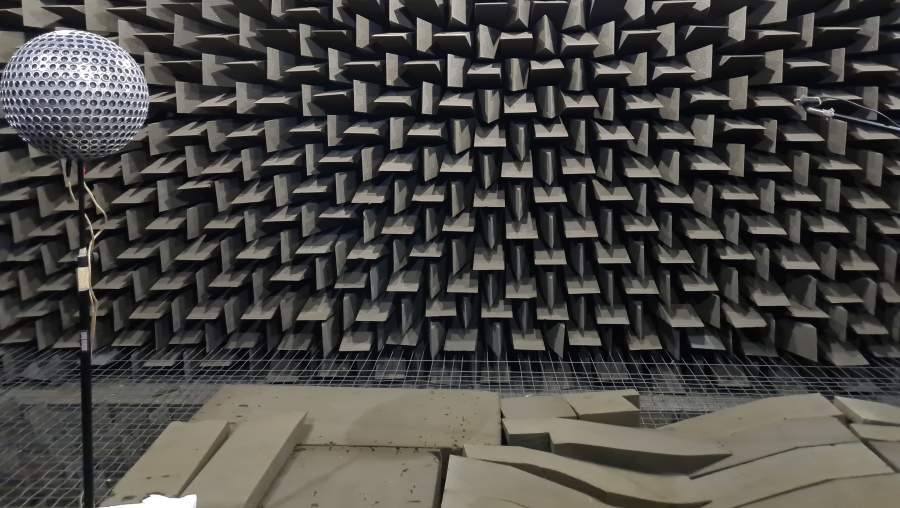Characterization of an omnidirectional parametric loudspeaker with exponential sine sweeps

Omnidireccional sound sources are required to perform some tests in building acoustics such as the measurement of the reverberation time of a room, or the airborne sound insulation of a wall. Dodecahedral sources are typically used for this purpose. However, they lose the omnidirectional behavior as the frequency increases. The GTM has proposed and constructed an alternative solution: the omnidirectional parametric loudspeaker (OPL). The current protype is made of 750 ultrasonic piezoelectric transducers set on a sphere of radius 0.125 cm. Relying on the parametric acoustic array (PAA) phenomenon, each transducer emits an ultrasonic carrier beam modulated by an audible signal. Thanks to non-linear propagation in air, natural demodulation takes place and focused audible beams are obtained. An OPL thus emits hundreds of audible sound beams in all directions, thus obtaining the desired omnidirectional pattern.
The researchers from the acoustics area of the GTM, Dr. Marc Arnela, Carme Martínez-Suquía and Prof. Oriol Guasch, have tested this prototype in the anechoic chamber of the Acoustics Lab. They have proposed to use exponential sine sweeps for this task, which has allowed them to produce higher sound pressure levels compared to other signals such as white or pink noise. The tests included the frequency response and the directivity of the OPL, showing a better performance of the OPL at higher frequencies compared to a conventional dodecahedral loudspeaker.
The details of this work have been recently published in Applied Acoustics (https://doi.org/10.1016/j.apacoust.2021.108268)
- Marc Arnela, Carme Martínez-Suquía, Oriol Guasch (2021), “Characterization of an omnidirectional parametric loudspeaker with exponential sine sweeps”, Applied Acoustics, 182, 108268.
Abstract:
An omnidirectional parametric loudspeaker (OPL) is a sound source that is made of hundreds of ultrasonic piezoelectric transducers set on a sphere. Relying on the parametric acoustic array (PAA) phenomenon, each transducer emits an ultrasonic carrier beam modulated by an audible signal. Thanks to non-linear propagation in air, natural demodulation takes place and focused audible beams are obtained. An OPL thus emits hundreds of audible sound beams in all directions. In this work, the performance of an OPL prototype containing 750 transducers set on a sphere of radius 0.125 cm is examined in free-field conditions. The frequency response, sound pressure level (SPL) and directivity are measured using exponential sine sweeps (ESS). Compared to broad band signals such as white or pink noise, the OPL can produce higher SPLs with ESS because the acoustic power concentrates on a single frequency only. This makes the OPL suitable for room acoustic measurements. A conventional dodechaedral sound source is also measured for comparison. Results show that the OPL produces a better omnidirectional sound field above 1 kHz, but it performs worse at lower frequencies. Moreover, it presents a flatter frequency response in all directions, although it generates lower SPL values. The Directivity Index (DI) required by the ISO 3382-2 and ISO 16283-1 standards has also been computed for both sources. The OPL cannot fulfill the requirements of the standard at low frequencies. This paper also demonstrates and discusses DI measurements of high resolution both for the new OPL and the traditional onmidirectional speakers.